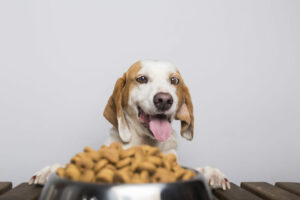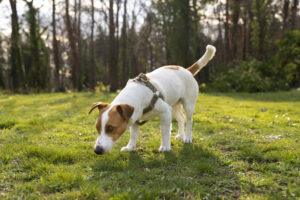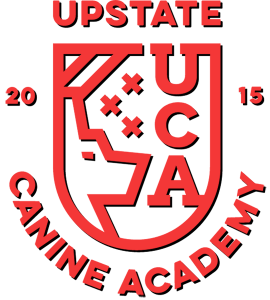Potty training is an important part of bringing a new puppy into your home. It not only promotes cleanliness and hygiene, but it also lays the groundwork for excellent behavior and communication between you as parents and your pet.
You can avoid accidents, keep your home clean, and build a strong attachment based on trust and understanding by training your puppy where and when to excrete.
We will look at efficient ways toilet teaching, and strategies for properly potty training your child or new puppy, preparing them for a lifetime of good habits and a pleasant coexistence with your family.
Why is potty training crucial for your puppy?
The holy grail of puppy rearing is potty training. It’s the key to keeping your home comfortable and clean, as well as preventing any unpleasant surprises from appearing where they shouldn’t.
Plus, let’s face it, no one wants to be known as the person with big kid of a puppy who leaves small gifts all over the place.
Potty training is essential because it teaches your puppy where and when to relieve themselves, sparing you from needless cleanup and aggravation.
So strap in because we’re about to enter the realm of puppy pee and poop.
Guide on How to Potty Training
1. Preparing for Potty Training: Setting a Schedule and Creating a Consistent Routine
Establishing a regular feeding schedule
Consistency is essential when it comes to potty training. Begin by establishing a consistent feeding plan when ready for potty training with your dog.
This will assist you in predicting when they’ll need to go pee. Maintain consistent mealtimes and avoid keeping food out for them to nibble on. Only put food and water out for the dog during scheduled meal times or water breaks. Then plan to take the dog outside to go potty shortly after. Do not leave food and water out for the dog to have freely.

You’ll have a better sense of when they’ll need to go if you control their food schedule, making potty breaks easier to organize.
Determining ideal potty break intervals
Puppies’ bladders are so small that they can’t hold it in for long. Plan for toilet breaks every couple of hours as a general rule, especially after meals, naps, and playtime. Let your puppy out approximately 15 minutes after they eat and/or drink.
Keep an eye out for indicators that your pup has to relieve himself, like as sniffing the ground, circling, or becoming agitated. Remember that accidents happen, so be patient with your pet while they learn to keep it in and signal when they need to go.
2. Choosing the Right Potty Spot: Indoor vs. Outdoor and Establishing a Designated Area
Benefits and considerations of indoor potty training
If you live in an apartment or have a little outside area, indoor potty training can be a terrific choice.
It entails teaching or toilet training your dog to utilize a specific interior place, such as a pee pad or litter box.
This strategy necessitates perseverance and a lot of positive reinforcement. However, if you opt to start with indoor baby potty training, it may take a few weeks and your pup longer to adapt to outside potty training.
Benefits and considerations of outdoor potty training
Outdoor toilet training is the traditional method, in which you teach your puppy to perform his or her business outside.
The advantage is that dogs will eventually learn to identify the outdoors with toilet time, making the transition to eliminating the outside easier in the long term.
However, it necessitates more frequent journeys outside, which might be difficult in poor weather or if you live in a high-rise structure.
Creating a designated potty area
It is critical to have a distinct and start potty or potty training location whether you choose indoor or outdoor potty training.
This helps your puppy understand where they should go and keeps them from becoming confused about where it is acceptable for them to relieve themselves.

Choose a specific location and take your dog there on a regular basis, using verbal cues such as “go potty” to reinforce the connection. Don’t forget about cleanup, because no one wants a filthy bathroom area!
3. Positive Reinforcement Techniques: Rewarding and Encouraging Proper Elimination
The importance of positive reinforcement in potty training
The key to successful potty training is positive reinforcement. Make a huge big deal whenever your puppy is eliminated in using the potty proper location! Praise them, show them affection, and perhaps even organize a puppy party (well, maybe not that far). Show them that they did an excellent job, and they will be more driven to repeat that behavior. Positive reinforcement not only helps them comprehend what you want, but it also builds your bond with your pet.
Identifying and using effective rewards
Finding the correct rewards can make or break your potty training plan for success. Some puppies respond to treats, while others respond to playtime or a specific toy. Experiment with various prizes to see which ones work best for your puppy. Just keep in mind that the prize should be something they actually value and find interesting.
And, while it may seem obvious, avoid employing punishments or negative reinforcement when accidents occur. Only positive feelings!
Using verbal cues and praise for encouragement
During potty training, verbal instructions and praise are like magic words. Choose a simple phrase, such as “go potty” or “do your business,” and repeat it every time you take your pooch to his or her designated toilet spot. They’ll eventually correlate the cue with the desired activity and realize what you expect from them. When they do it correctly, shower them with praise in an excited tone (but not too loud, since neighbors). They’ll feel like toilet-training champs, and you’ll feel like the proud owner of a well-trained pup.
4. Handling Accidents: Cleaning Up and Redirecting Behavior
Reacting calmly and avoiding punishment
Your puppy is still learning, and they will make mistakes along the way. The goal here is to maintain your cool. Keep your cool and refrain from yelling or criticizing your dog. Remember, they’re not attempting to damage your favorite rug on purpose. Instead, take them outside to their designated potty area to help them understand where to go. Maintain your patience and understanding.
Properly cleaning up accidents to prevent re-marking
When incidents do occur, it is critical that they are cleaned up correctly. Your dog has an excellent sense of smell, and if they can still find their scent in a location, they may believe it is a suitable toilet area. To completely remove any trace of urine or feces, use an enzymatic cleanser. Otherwise, you can end up playing “spot the spot” with your four-legged pal indefinitely.
Redirecting your puppy to the designated potty spot
If you discover your puppy having an accident, swiftly and gently redirect them to the proper toilet location. Make no fuss about it; instead, gently steer them to where they should be going. Positive reinforcement is essential, so make sure to treat them when they finish in the right place. They’ll get it eventually, even if it takes a few attempts
5. Troubleshooting Challenges: Dealing with Regression and Resistance
Understanding common regression triggers and solutions
Potty training relapse is a real issue that can be really frustrating. But keep in mind that it’s typically simply a momentary setback. Regression can be triggered by stress, changes in routine, or even the smell of a previously soiled place. Stay patient, go back to basics, and reinforce your previous instruction. Your dog will soon be back on track.
Addressing resistance and fear-related issues
If your puppy seems resistant or fearful when it comes to potty training, try to identify the underlying cause. It could be a traumatic experience, fear of a specific surface, or even a medical issue. Take it slow, provide plenty of positive reinforcement, and consult with your vet if you notice persistent resistance or fear-related issues.
Seeking professional help if necessary for potty training
Potty training challenges can be daunting at times, and that’s okay. If you’ve done everything and are still stumped, don’t be afraid to seek professional assistance. Dog trainers and behaviorists can offer expert advice to help get your pup on a good routine. Remember, there’s no shame in asking for help with toilet training – we’ve all been there
6. Gradual Independence: Teaching Your Puppy to Communicate and Initiate Potty Breaks
Wouldn’t it be wonderful if your puppy could just inform you when it’s time to go use the potty? They can, with a little practice! Teach your dog a specific signal, such as ringing a bell or sitting near the door, to indicate that they need to go to the potty training. The key here is consistency, so always respond to their signal and take them to their preferred toilet spot.
Encouraging self-initiated potty breaks
Encourage your dog to take the initiative as they become more confident and dependable with their toilet training. Allow your child to sit with them if they approach the door or show signs of needing to go. This encourages independence and encourages kids to take responsibility for their own bathroom requirements.
7. Maintenance and Long-Term Success: Sustaining Good Habits and Preventing Relapses
- Maintaining a consistent schedule and routine
Consistency is the key to long-term toilet training success. Maintain a consistent schedule for feeding, playtime, and toilet breaks. Dogs thrive on consistency, and a constant schedule allows them to forecast and meet their restroom demands.
- Reinforcing good potty habits throughout your puppy’s life
Potty training does not end when your puppy grows into an adult dog. Continue to praise and treat your dog for going in the proper area to reinforce healthy potty habits. Positive reinforcement goes a long way toward reinforcing desired behaviors and ensuring your canine companion remains a well-potty-trained pro for the rest of their life.
- Preventing relapses and addressing setbacks
Even the best-trained dogs might experience setbacks from time to time. Don’t be alarmed if your dog relapses or starts having accidents again. Revisit the fundamentals, reinforce training, and return to your regular schedule. Address any potential triggers, such as environmental changes, and provide additional information and support as needed. You can do it!
CONCLUSION
Potty training your new puppy takes perseverance, consistency, and positive rewards. You may develop a schedule, locate the best pee site, and teach your puppy the necessary habits by following the instructions indicated in this potty training tips tutorial. Remember to be patient with mishaps and setbacks, as they are a normal part of the potty training process.
Your puppy will learn to communicate their requirements and develop healthy toilet habits with time and persistence.
You are investing in a future of cleanliness and harmony with your most children and cherished canine friends by investing in the initial potty training phase.
More articles that you may visit:
7 Signs of a Professional Dog Trainer Near Me That You Can Trust
Main Commands to Teach Your Dog for Well-Behaved Behavior
7 Behavioral Issues Solved by Professional Dog Training Program
